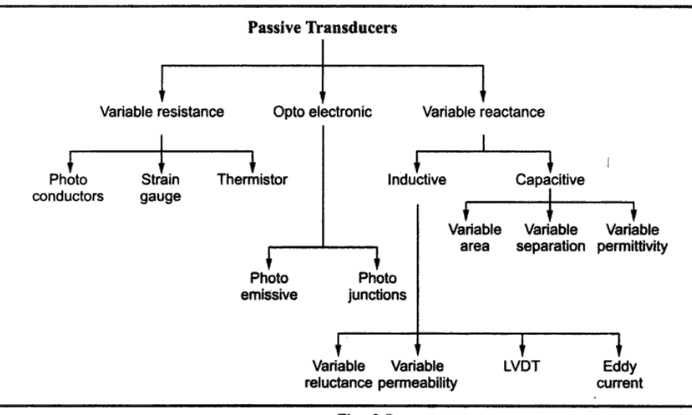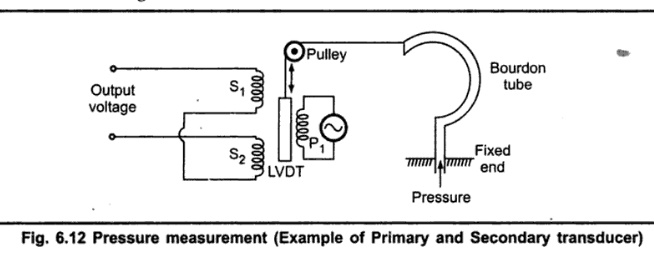Classification of Electrical Transducers
Transducers may be classified according to their structure, method of energy conversion and application. Thus we can say that transducers are classified
• As active and passive transducer
• According to transduction principle
• As analog and digital transducer
• As primary and secondary transducer
• As transducer and inverse transducer
Active and Passive Transducer
Active Transducers
Ø Active transducers are self-generating type of transducers.
Ø These transducers develop an electrical parameter (i.e. voltage or current) which is proportional to the quantity under measurement.
Ø These transducers do not require any external source or power for their operation.
Ø They can be subdivided into the following commonly used types

Passive Transducers
Ø Passive transducers do not generate any electrical signal by themselves.
Ø To obtain an electrical signal from such transducers, an external source of power is essential.
Ø Passive transducers depend upon the change in an electrical parameter (R, L, or C).
Ø They are also known as externally power driven transducers.
Ø They can be subdivided into the following commonly used types.

According to Transduction Principle
The transducers can be classified according to principle used in transduction.
• Capacitive transduction
• Electromagnetic transduction
• Inductive transduction
• Piezoelectric transduction
• Photovoltaic transduction
• Photoconductive transduction
Analog and Digital Transducers
The transducers can be classified on the basis of the output which may be a continuous function of time or the output may be in discrete steps.
Analog Transducers
Ø These transducers convert the input quantity into an analog output which is a continuous function of time.
Ø A strain gauge, LVDT, thermocouples or thermistors are called analog transducers as they produce an outp which is a continuous function of time.
Digital Transducers
Ø Digital transducers produce an electrical output in the form of pulses which forms an unique code.
Ø Unique code is generated for each discrete value sensed.
Primary or Secondary
Ø Some transducers consist of mechanical device along with the electrical device.
Ø In such transducers mechanical device acts as a primary transducer and converts physical quantity into mechanical signal.
Ø The electrical device then converts mechanical signal produced by primary transducer into an electrical signal.
Ø Therefore, electrical device acts as a secondary transducer.
Ø For an example, in pressure measurement Bourdons tube acts as a primary transducer which converts a pressure into displacement and LVDT acts as a secondary transducer which converts this displacement into an equivalent electrical signal.

Transducer and Inverse Transducer
Ø Transducers convert non-electrical quantity into electrical quantity whereas inverse transducer converts electrical quantity into non-electrical quantity.
Ø For example, microphone is a transducer which converts sound signal into an electrical signal whereas loudspeaker is an inverse transducer which converts electrical signal into sound signal.

